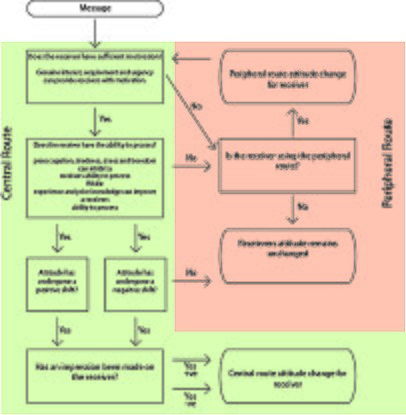Although
this commercial was never actually used by Bridgestone as they did not feel it
represented them appropriately, it racked up millions views on YouTube and
ended up being their most viewed commercial. Worked out well for Bridgestone as
they got free worldwide advertising!
There are
three ways we could explain why this commercial had so much success compared to
perhaps more generic ads. Firstly of course; humour. There is a lot to be said about the effect humour has in
advertising. Although humour may not always be universal because of language
barriers for example, there are generally widely accepted topics that everyone
can agree are amusing. This commercial plays with this idea as not one word is
spoken but the video still shares an idea that everyone can understand.
Sternthal and Craig (1973) explain how humorous messages attract attention,
which distracts the audience and which in turn leads to a reduction in
criticism and an increase in persuasion. Clearly this works in the commercials
favour, as it would increase the likelihood for someone to buy Bridgestone
tyres. Additionally, the fact that the ad is now in your mind means when you
come to choose which new tyres you want for your car, the availability
heuristic will ensure they are Bridgestone tyres.
 |
| https://upload.wikimedia.org/wikipedia/commons/thumb/8/8b/Elm-diagram.jpg/406px-Elm-diagram.jpg |
Another
way to look at the persuasive power of this ad is through the heuristic-systematic model of information
processing (Chaiken, 1980), which explains how people receive and process
persuasive messages. HSM allows both systematic and heuristic processing to
occur; heuristic processing requires minimal cognitive effort on the part of
the audience, basically like a mental short-cut whereas systematic processing
requires more comprehensive and analytical thinking. Depending on the audience’s
involvement in the message content, heuristic and systematic processing can
occur independently or at the same time. Specifically, Lancendorfer, Atkin and
Reece (2008) found that people processed ads with dogs more heuristically, and
if people process more heuristically
then ad liking increases. He explains that the presence of the dog in the ad suppresses the systematic
processing and increases the heuristic processing, ultimately leading to an
increased positive attitude towards the ad. Overall, the accepted belief is
that animals in commercials instigate good feelings and subsequently a positive
view of the brand. This process is similar to the elaboration-likelihood
model (Petty and Cacioppo, 1986), where there are also two routes to process
information, depending on how much cognitive effort the audience is willing to
use. They will take the central route if a lot of cognitive effort is used,
just like systematic processing. Whereas
the peripheral route will be taken when there is less cognitive effort such as
in heuristic processing. This shows how the audience would be more persuaded by
a commercial containing a dog as it requires less cognitive effort to process
and is thus more pleasant for the viewer.
I
previously mentioned the use of humour in this commercial, but what really makes it that funny? An important aspect to look at is the use of anthropomorphism, which is the practice
of giving human characteristics to non-human things such as animals or
inanimate objects. A successful ad elicits a physiological response in the viewer,
which makes them connect with the content subsequently making the message
harder to forget. The commercial becomes relatable through the use of
anthropomorphism, as even though they are animals the emotions they feel are human. Additionally, it was found that people actually prefer animals in
advertising when they are presented anthropomorphically (Connel, 2013). As
explained above, the use of animals already increases the commercial appeal and
by anthropomorphising the dog it makes it even more persuasive.
So
basically if you want a successful commercial, include a dog acting like a
human.
References
Chaiken,
S. (1980). Heuristic versus systematic information processing and the use of
source versus message cues in persuasion. Journal of personality and
social psychology, 39(5), 752.
Connell, P. (2013). The role of baseline physical
similarity to humans in consumer responses to anthropomorphic animal images. Cass Knowledge.
Kahneman, D.
(2011). Thinking, fast and slow. Macmillan.
Lancendorfer,
K. M., Atkin, J. L., & Reece, B. B. (2008). Animals in advertising: Love
dogs? Love the ad!. Journal of Business Research, 61(5),
384-391.
Petty,
R. E., & Cacioppo, J. T. (1986). The elaboration likelihood model of
persuasion. In Communication and persuasion (pp. 1-24).
Springer New York.
Sternthal, B., & Craig, C. S. (1973). Humor
in advertising. The Journal of Marketing, 12-18.

No comments:
Post a Comment
Note: Only a member of this blog may post a comment.